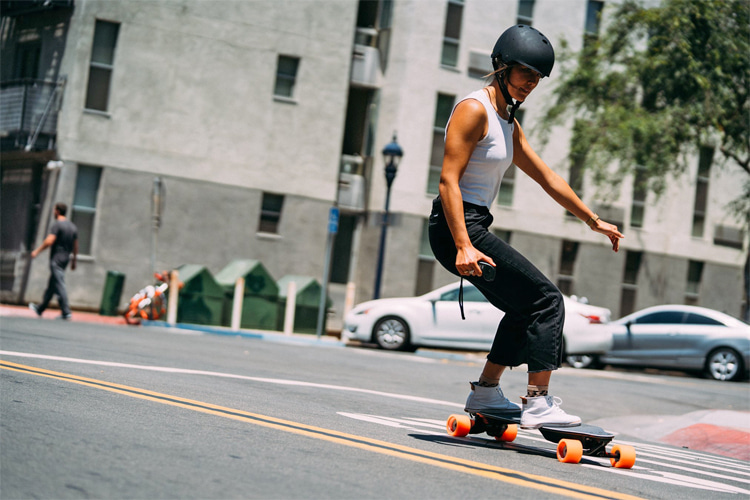How does an electric skateboard work? What makes a good esk8? Is it legal to ride an e-skate? Here's everything you need to know.
Electric skateboards, also known as esk8 or e-skate, have become increasingly popular and are extremely fun to ride.
They are equipped with motors inside the wheels and have a removable battery embedded in the deck.
Apart from electronics, there are also fiberglass and metal parts attached to these fast-moving devices.
High-end electric skateboards feature LED headlights and tail lights.
Decks vary from super stiff to highly flexible platforms. They are made from wood, plastic - or both - and come with grip tape installed.
The most advanced electric skateboard models are sleek, smooth, and aerodynamic.
In flat grounds, a stiffer board will prevail; on bumpier surfaces, flexible decks will help cushion impacts and dampen cracks.
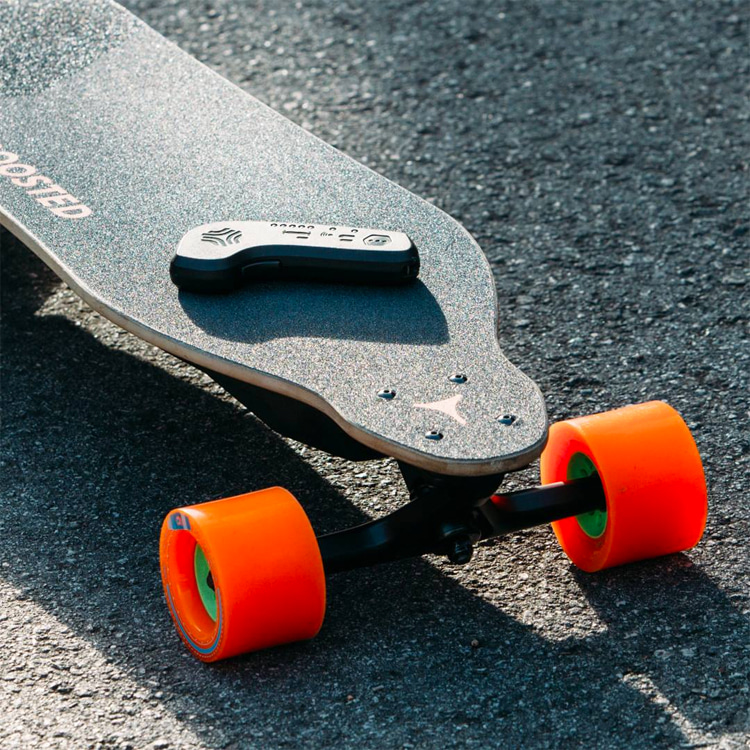
Fast and Highly Maneuverable
Make no mistake. These futuristic skateboards can go really fast - up to 35 miles per hour (56 kilometers per hour) - and reach high speeds in a couple of seconds.
In most cases, when the rider lets off the brake, the wheels will continue to spin because of the inertia involved.
It's important to find a model with reliable remote control and up-to-date software.
The wireless handheld controller fits in your hand and is easy to use. It will let you change speed settings and braking modes.
The most common types of electric skateboards are longboards and cruisers.
The cruiser e-board will allow you to kickturn like in a normal skateboard; an electric longboard is a great option for commuters.
The wheels that come with e-skateboards are often bigger and smoother compared to their regular counterparts.
If you're expecting to ride your skateboard on rough pavements and grass, then off-road or all-terrain wheels might be a good option.
Battery life ranges from five to 20 miles (8 to 32 kilometers), depending on your budget and transportation needs.
The price of an electric skateboard goes from $99 to up to $2,000.
Portable, maneuverable, and compact models weigh between 5-10 pounds (2.2-4.5 kilograms), but sturdier versions could easily weigh 25 pounds (11.3 kilograms).
E-skates allow you to ride down the city streets fast or go up steep hills effortlessly, and most of them usually take around one to five hours to get fully charged.
The best electric skateboard brands are Boosted, Meepo, Skatebolt, Swagtron, and Evolve.
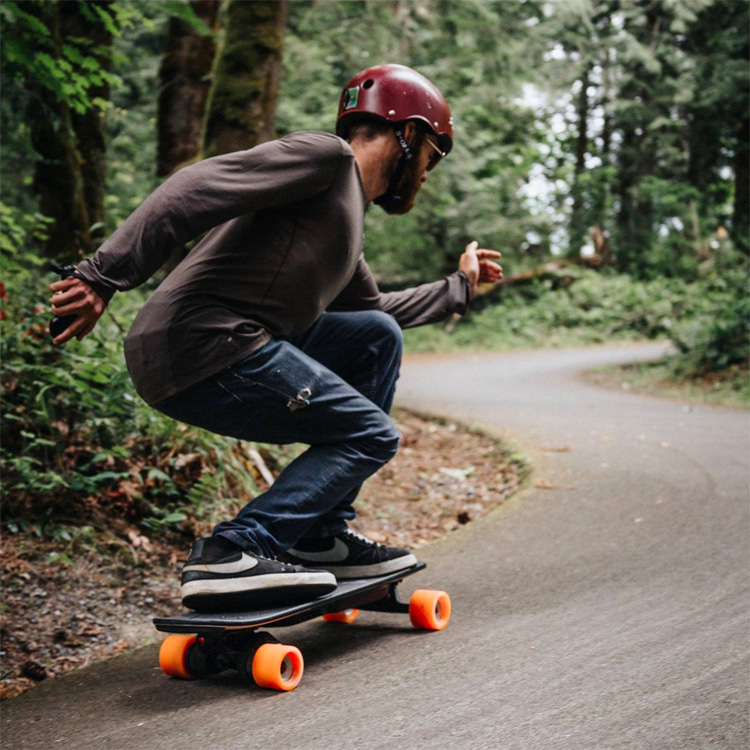
Safety Tips
For many people, an esk8 is the first experience in the world of skateboarding.
Ideally, it shouldn't be like that, but from a positive perspective, it could be a way of growing passion and enthusiasm for standard skateboards.
Beginners should always wear a helmet when riding an e-skate.
First-time skaters don't usually know how to fall properly and minimize wounds, and a helmet could literally save lives.
If for any reason, you fall off your board, protective gear will help prevent and mitigate serious injuries. So, elbow pads, knee pads, and wrist guards are also wise options.
Helmets are also a wise decision, even for accomplished skateboarders.
There are many unexpected obstacles, cars, trucks, and motorbikes moving all the time from one place to another in an environment where you are definitely the most fragile object.
If you're able to ride a regular skateboard or longboard, you'll get used to electric skateboards faster.
Pushing, turning, carving, and foot braking are basic skateboarding techniques that will come in handy when riding an e-skateboard.
Knowing how to slow down and stop your board is critical, especially on an electric skateboard.
If you experience a technical problem and the brakes fail, you will need to know how to reduce speed manually and avoid crashing and hurting yourself.
In the end, you've got to be in control of the board and feel it like an extension of your body.
You can ride an electric skateboard without power. Actually, by pushing on the skateboard before you start the throttle, you will be saving energy.
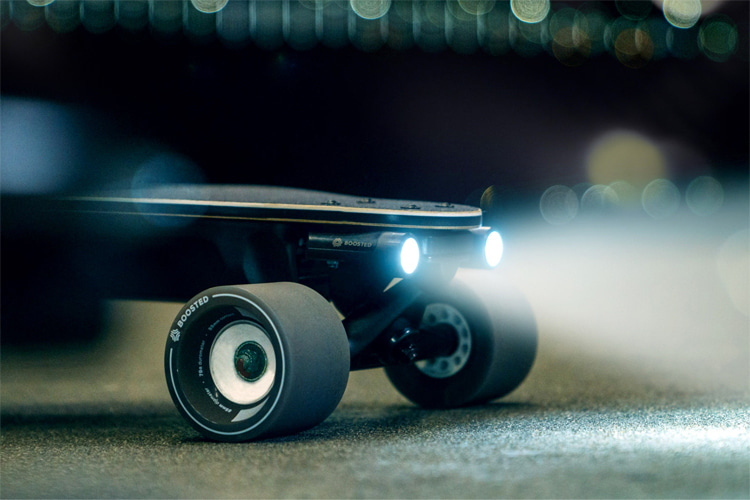
ESK8 Riding Tips
Start by getting acquainted with the board and the so-called rideable technology.
Choose a safe, flat, clean, wide, and obstacle-free area where you can practice and feel comfortable with the esk8.
An empty parking lot or a boardwalk are perfect spots for getting used to your sidewalk surfing gadget.
Ready for an electric skateboarding session? It's easy to learn, but pay attention to the following tips.
The take-off moment requires a lot of attention.
Lean forward during the acceleration phase to avoid falling off the board, and lean backward while braking.
Anticipate both situations by adjusting your body and keeping a low stance.
Be prepared to either stop, reduce speed, or swerve around a car, pedestrian, or pothole.
Riding with your headphones on is not a good idea, as you will not be aware of your surroundings.
Also, don't ride your electric skateboard in the rain. Electronic systems could fail and put your health in jeopardy.
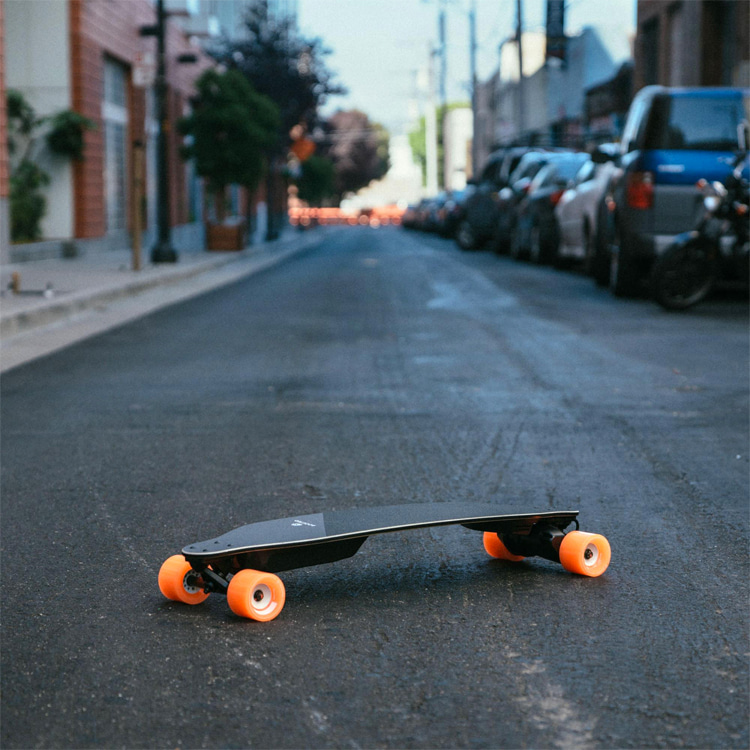
Legal Issues
Is it legal to ride an electric skateboard on roads and public spaces?
Yes and no. There are several answers to this question.
Like electric scooters, electric skateboards are a new category and type of transportation.
In California, Singapore, and some European countries, you are allowed to ride an electric skateboard in streets, roads, cycle paths, and even footpaths.
There could be top-speed limitations. In several regions, e-skates follow the same rules as bicycles.
In many other nations, there are still no laws specifically addressing this new reality.
It is important to stress that the absence of a law forbidding the right to ride an electric skateboard does not necessarily mean that it is legal to get them to the streets.
In some countries, its use requires insurance and proper registration.
An esk8 could be considered a motorized vehicle in one place and something completely different - like a personal transportation device - in the neighboring state or nation.
Two-wheeled, self-balancing personal transporters and electric bikes were initially considered illegal in the United States.
However, as time passed by, they were given permission to be used in public areas.
In fact, electric skateboards are already allowed in a wide variety of environments and countries.
In California, Bill AB-604 determines ordinances, rules, and regulations for electrically motorized skateboards.
The rider must be at least 16 years of age and is allowed to operate e-skates on a highway, bikeway, or any other public bicycle path, sidewalk, or trail, as long as they use a helmet.
The device must be equipped with headlights and reflectors and should have an electric propulsion system averaging less than 1,000 watts.
The maximum speed allowed is 20 miles per hour.
It is only a matter of time before all countries include electric skateboards in the legislation.
If you're unsure about your country's regulations regarding e-skates, search online or ask for more information at your local skate shop.
